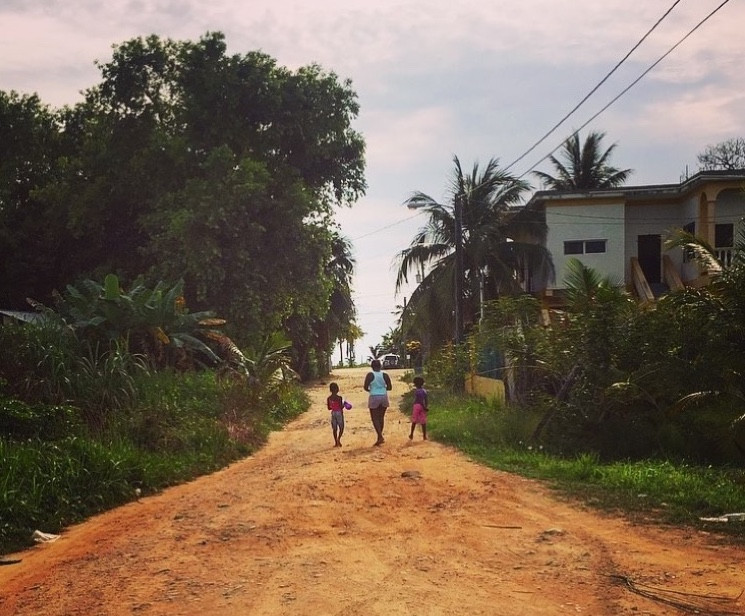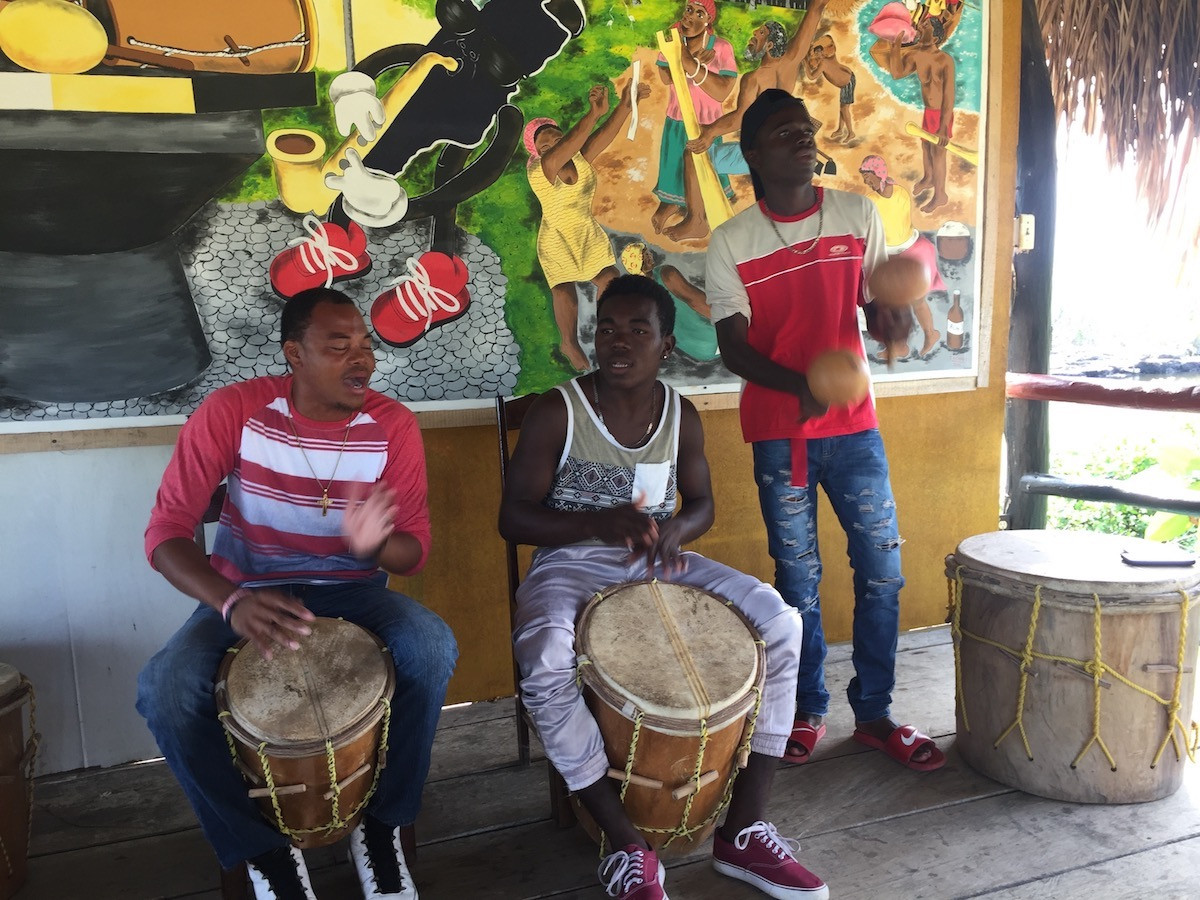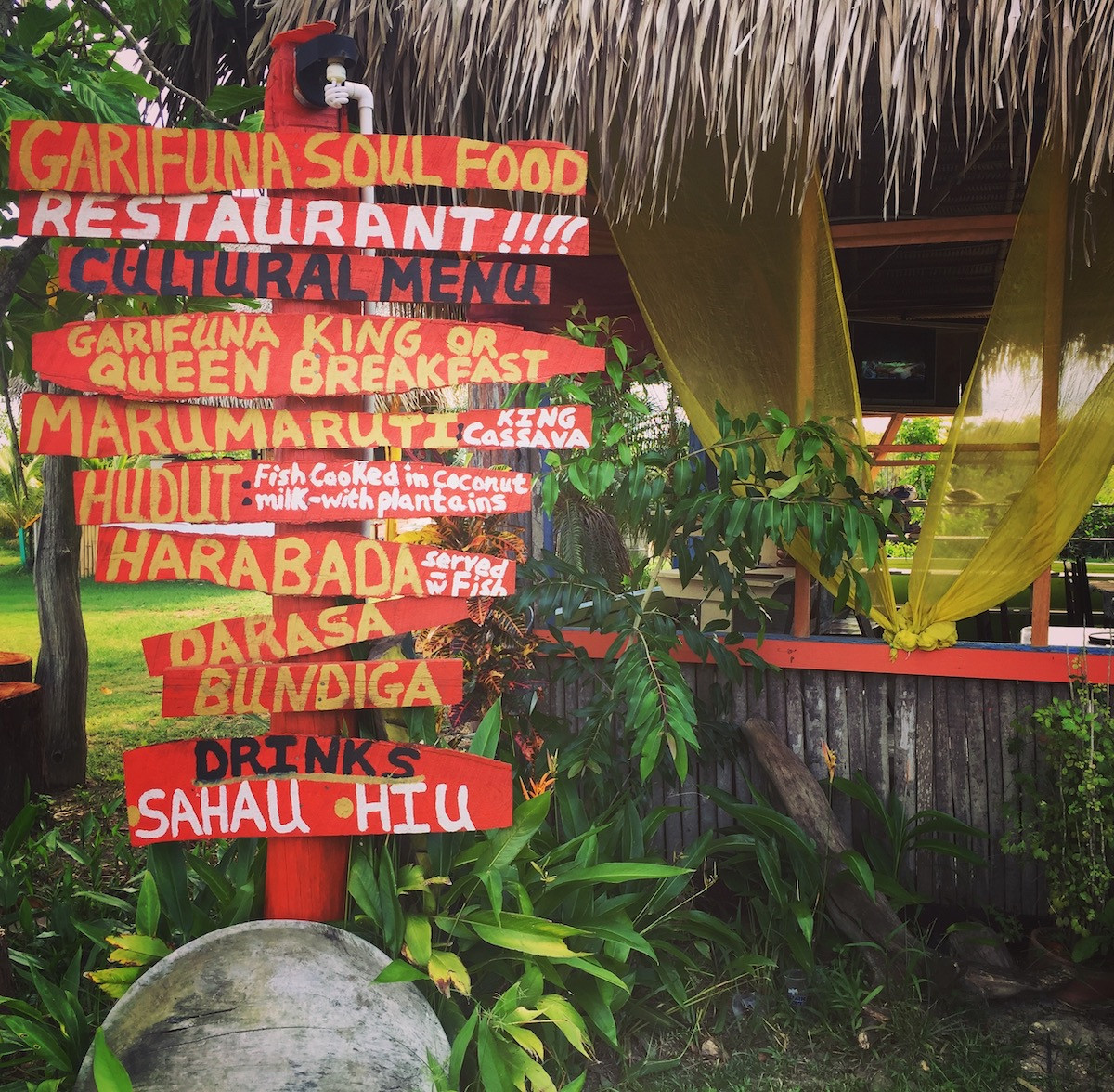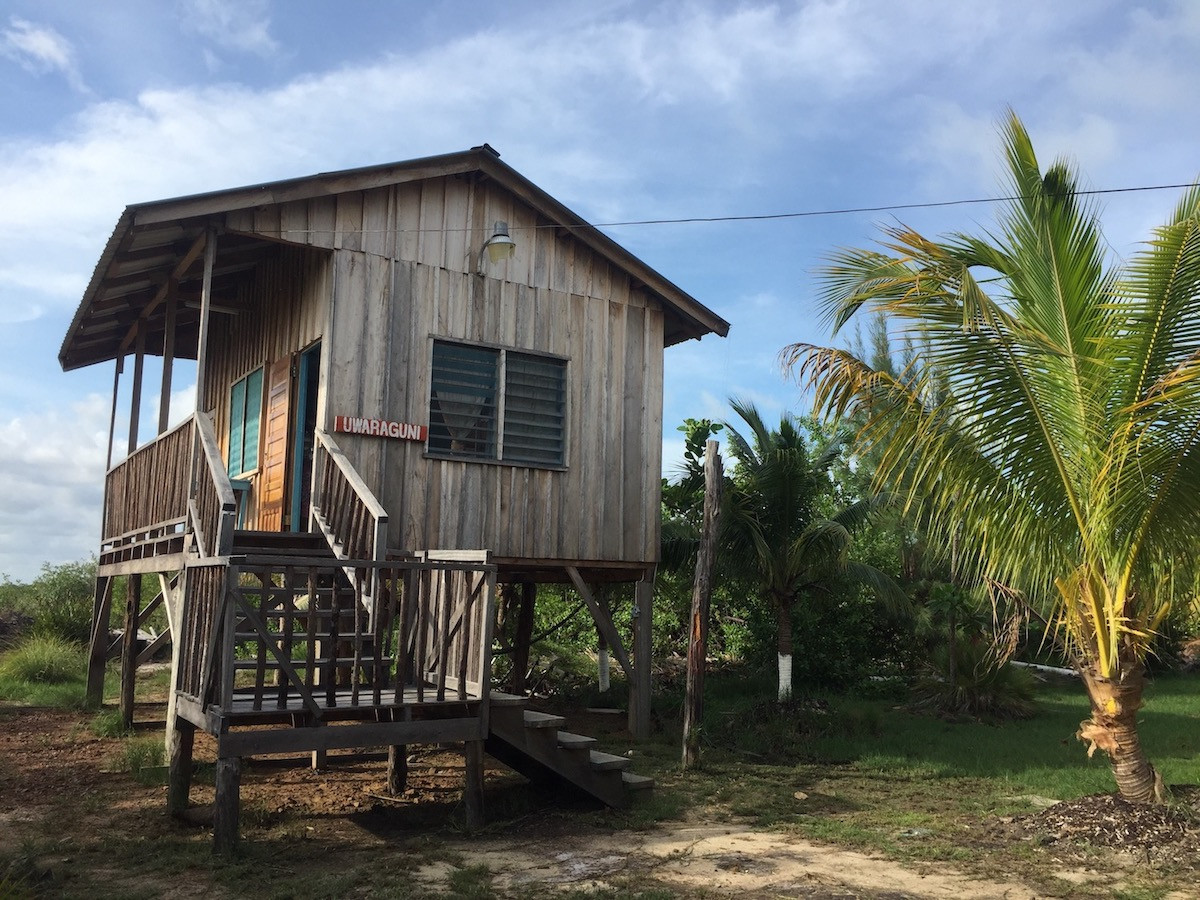Garifuna culture, a vibrant blend of African and indigenous traditions, is undeniably impacted by tourism, offering both opportunities and challenges. SIXT.VN acknowledges this complex interplay and provides travel solutions that aim to support responsible and sustainable tourism in Belize and beyond. These services allow travelers to immerse themselves in local culture, while also ensuring that the local communities benefit directly from the tourism sector, promoting cultural preservation and economic empowerment. Let’s dive into how tourism influences Garifuna culture and how we can make a positive impact.
1. What is Garifuna Culture and Where is it Found?
Garifuna culture is a unique blend of African, Arawak, and Carib traditions, primarily found along the Caribbean coasts of Honduras, Belize, Guatemala, and Nicaragua. This distinct culture is characterized by its language, music, dance, and culinary practices. Recognized by UNESCO as a Masterpiece of the Oral and Intangible Heritage of Humanity, the Garifuna people have a rich history that has significantly shaped their identity. Tourism, while providing economic opportunities, also poses challenges to preserving this cultural heritage. By understanding the nuances of Garifuna culture, travelers can engage more respectfully and contribute to its sustainability.
1.1 Where Did Garifuna Culture Originate?
Garifuna culture originated in St. Vincent in the 17th century from the intermingling of African slaves and indigenous Carib Indians. This unique blend led to the development of a distinct language, traditions, and customs. The Garifuna people were later exiled from St. Vincent and settled along the coasts of Central America, primarily in Honduras, Belize, Guatemala, and Nicaragua. Their culture has survived and evolved, maintaining a strong sense of identity and community despite historical challenges.
1.2 What are the Key Elements of Garifuna Cultural Identity?
The key elements of Garifuna cultural identity include their language, music, dance, and culinary practices. The Garifuna language, a unique Arawakan-based language with influences from Carib and European languages, is central to their identity. Music and dance, particularly drumming, play a vital role in ceremonies and social gatherings. Traditional Garifuna cuisine, featuring dishes like hudut (mashed plantains with fish stew) and cassava bread, further defines their cultural heritage. These elements, combined with a strong sense of community and ancestral connections, form the core of Garifuna cultural identity.
1.3 What is the Significance of the Garifuna Language?
The Garifuna language holds immense significance as a cornerstone of their cultural identity. A unique blend of Arawakan, Carib, French, and English, the language serves as a vital link to their history and traditions. UNESCO has recognized the Garifuna language as a Masterpiece of Oral and Intangible Heritage, underscoring its importance in preserving their cultural heritage. Efforts to promote and revitalize the language are crucial for ensuring the survival of Garifuna culture in the face of globalization and external influences.
 Garifuna language welcome sign
Garifuna language welcome sign
2. How Does Tourism Impact Garifuna Communities?
Tourism can bring both economic benefits and cultural challenges to Garifuna communities. On the positive side, tourism can create jobs, generate income, and stimulate local economies. However, it can also lead to the commodification of culture, loss of traditional practices, and environmental degradation. Understanding these impacts is crucial for promoting sustainable tourism practices that benefit both the Garifuna people and visitors.
2.1 What are the Economic Benefits of Tourism for Garifuna Communities?
Tourism can provide significant economic benefits to Garifuna communities by creating jobs in hospitality, tour guiding, and handicrafts. It also generates income through the sale of local products and services, supporting small businesses and entrepreneurs. According to the Statistical Institute of Belize, tourism contributes significantly to the national GDP, and a portion of this revenue reaches Garifuna communities that actively participate in the tourism sector. However, it’s important to ensure that these economic benefits are distributed equitably and sustainably within the community.
2.2 What are the Potential Negative Impacts of Tourism on Garifuna Culture?
Tourism can lead to the commodification of Garifuna culture, where traditional practices are altered or commercialized to cater to tourist expectations. This can result in the loss of authenticity and cultural integrity. Increased tourism can also strain local resources, leading to environmental degradation and disruption of traditional lifestyles. Additionally, the influx of foreign values and behaviors can erode traditional customs and social structures. Balancing the economic benefits of tourism with the preservation of Garifuna culture is essential for sustainable development.
2.3 How Can Sustainable Tourism Help Preserve Garifuna Heritage?
Sustainable tourism can help preserve Garifuna heritage by promoting responsible travel practices that respect local culture and traditions. This includes supporting community-based tourism initiatives, hiring local guides, purchasing local products, and respecting cultural norms. According to a report by the World Tourism Organization, sustainable tourism can empower local communities, protect natural resources, and promote cultural preservation. By prioritizing sustainability, tourism can become a tool for preserving Garifuna heritage for future generations.
3. What are Examples of Tourism Affecting Garifuna Culture?
Tourism can impact Garifuna culture in various ways, both positively and negatively. For example, the rise in cultural tourism has led to the revival of traditional music and dance performances, providing a platform for cultural expression and preservation. On the other hand, the commercialization of cultural practices, such as selling mass-produced souvenirs instead of authentic handicrafts, can dilute the cultural value. Examining specific examples helps to understand the complex relationship between tourism and Garifuna culture.
3.1 How Has Tourism Influenced Garifuna Music and Dance?
Tourism has had a profound influence on Garifuna music and dance. The demand for cultural performances has led to the revitalization of traditional drumming and dance, providing opportunities for artists to showcase their talents. However, it has also led to the commercialization of these art forms, with performances sometimes tailored to meet tourist expectations rather than preserving their authentic cultural context. Striking a balance between promoting cultural tourism and maintaining the integrity of Garifuna music and dance is essential.
 Garifuna drumming lesson
Garifuna drumming lesson
3.2 What is the Impact of Tourism on Garifuna Language Preservation?
Tourism can have both positive and negative impacts on Garifuna language preservation. On the one hand, increased awareness of Garifuna culture through tourism can encourage language revitalization efforts. Tourists who show interest in learning a few Garifuna phrases can motivate community members to preserve and promote their language. On the other hand, the dominance of English and Spanish in the tourism industry can marginalize the use of Garifuna, especially among younger generations. Supporting initiatives that promote Garifuna language education and usage in tourism-related activities is crucial for its preservation.
3.3 How Has Tourism Changed Traditional Garifuna Crafts and Arts?
Tourism has significantly changed traditional Garifuna crafts and arts. The demand for souvenirs and cultural artifacts has led to both the revival of traditional techniques and the introduction of mass-produced, less authentic items. While the economic benefits of selling crafts can support local artisans, the pressure to cater to tourist tastes can compromise the quality and cultural significance of these items. Encouraging the production and sale of authentic, locally made crafts can help preserve traditional skills and promote cultural pride.
4. What Strategies Can Help Preserve Garifuna Culture in the Face of Tourism?
Preserving Garifuna culture in the face of tourism requires a multi-faceted approach that involves community empowerment, cultural education, and sustainable tourism practices. Supporting local initiatives, promoting cultural awareness, and implementing responsible tourism policies are essential steps. By working together, Garifuna communities, tourism operators, and visitors can ensure that tourism contributes to the preservation and promotion of Garifuna culture for generations to come.
4.1 How Can Community-Based Tourism Empower Garifuna Communities?
Community-based tourism (CBT) can empower Garifuna communities by giving them control over tourism development and ensuring that they directly benefit from its economic opportunities. CBT initiatives allow communities to showcase their culture, manage their resources sustainably, and make decisions about how tourism should be developed in their area. According to the Community Tourism Association of Belize (CTAB), CBT can lead to increased income, improved livelihoods, and greater cultural pride. By supporting CBT, tourists can contribute to the empowerment and well-being of Garifuna communities.
4.2 What Role Does Cultural Education Play in Preserving Garifuna Heritage?
Cultural education plays a vital role in preserving Garifuna heritage by raising awareness and appreciation for their unique traditions, language, and history. By educating both community members and visitors about Garifuna culture, we can foster a deeper understanding and respect for their cultural identity. Schools, museums, and cultural centers can offer educational programs that promote Garifuna language, music, dance, and crafts. Additionally, tourism operators can incorporate cultural education into their tours, providing visitors with meaningful insights into Garifuna culture.
4.3 How Can Responsible Tourism Policies Support Garifuna Cultural Preservation?
Responsible tourism policies can support Garifuna cultural preservation by regulating tourism activities to minimize negative impacts on local culture and environment. These policies can include guidelines for sustainable tourism practices, restrictions on harmful activities, and incentives for businesses that promote cultural preservation. Governments and tourism authorities can work with Garifuna communities to develop and implement policies that protect their cultural heritage while allowing them to benefit from tourism. Additionally, promoting ethical tourism practices among visitors can help ensure that tourism contributes to the well-being and preservation of Garifuna culture.
5. Where Can Tourists Experience Authentic Garifuna Culture?
Tourists seeking authentic Garifuna cultural experiences can visit communities like Hopkins and Dangriga in Belize, where they can immerse themselves in local traditions, music, and cuisine. Participating in community-led tours, attending cultural events, and supporting local businesses can provide meaningful and respectful interactions with Garifuna culture. It is important to approach these experiences with sensitivity and a genuine interest in learning about and supporting the community.
5.1 What Cultural Events and Festivals Showcase Garifuna Traditions?
Several cultural events and festivals showcase Garifuna traditions, providing opportunities for visitors to experience their vibrant culture. Garifuna Settlement Day, celebrated on November 19th in Belize, commemorates the arrival of the Garifuna people in 1832 and features music, dance, and traditional food. Other events, such as drumming festivals and cultural performances, take place throughout the year in Garifuna communities. Attending these events can offer a deeper understanding of Garifuna culture and support local artists and performers.
5.2 What are the Best Community-Based Tourism Initiatives in Garifuna Areas?
Several community-based tourism (CBT) initiatives in Garifuna areas offer authentic cultural experiences while supporting local communities. Palmento Grove Cultural and Fishing Lodge in Hopkins, Belize, provides visitors with opportunities to learn about Garifuna fishing techniques, cooking, and traditions. Lebeha Drumming Center, also in Hopkins, offers drumming lessons and cultural performances. These initiatives are owned and operated by Garifuna community members, ensuring that tourism benefits directly support local livelihoods and cultural preservation.
5.3 How Can Tourists Respectfully Engage with Garifuna Culture?
Tourists can respectfully engage with Garifuna culture by learning about their traditions, customs, and history before visiting. Dressing modestly, asking permission before taking photos, and supporting local businesses are important ways to show respect. Participating in cultural activities with genuine interest and avoiding behaviors that could be offensive or disrespectful are also essential. By approaching Garifuna culture with sensitivity and a desire to learn, tourists can contribute to positive and meaningful interactions.
 Garifuna Soul Food Restaurant
Garifuna Soul Food Restaurant
6. How Can Travelers Ensure Their Tourism is Beneficial to Garifuna Communities?
Travelers can ensure their tourism is beneficial to Garifuna communities by making conscious choices that support local economies and cultural preservation. This includes staying at locally owned accommodations, eating at local restaurants, purchasing locally made products, and participating in community-led tours. By prioritizing these options, travelers can contribute to the economic empowerment and cultural preservation of Garifuna communities.
6.1 What are the Benefits of Staying at Locally Owned Accommodations?
Staying at locally owned accommodations offers several benefits for Garifuna communities. It ensures that tourism revenue stays within the community, supporting local livelihoods and small businesses. Local accommodations often provide more authentic cultural experiences and opportunities to interact with community members. Additionally, they are more likely to adhere to sustainable practices that protect the environment and cultural heritage.
6.2 Why is it Important to Eat at Local Restaurants in Garifuna Areas?
Eating at local restaurants in Garifuna areas is important because it supports local food producers, chefs, and businesses. It also provides an opportunity to experience traditional Garifuna cuisine, which is an integral part of their cultural identity. By choosing local restaurants, tourists can contribute to the economic sustainability of the community and help preserve their culinary traditions.
6.3 How Does Purchasing Locally Made Products Benefit Garifuna Artisans?
Purchasing locally made products directly benefits Garifuna artisans by providing them with income and recognition for their skills. It also helps preserve traditional crafts and techniques that are passed down through generations. By choosing authentic, locally made products over mass-produced souvenirs, tourists can support the cultural heritage and economic well-being of Garifuna communities.
7. What is the Role of Government and NGOs in Supporting Garifuna Culture?
Government agencies and non-governmental organizations (NGOs) play a crucial role in supporting Garifuna culture through various initiatives, including funding cultural preservation projects, promoting sustainable tourism, and advocating for the rights of Garifuna communities. These organizations can also provide technical assistance, training, and resources to help Garifuna communities manage tourism in a way that benefits their culture and economy. Collaboration between government, NGOs, and Garifuna communities is essential for ensuring the long-term sustainability of their cultural heritage.
7.1 What Government Programs Support Garifuna Cultural Preservation?
Government programs that support Garifuna cultural preservation include funding for cultural centers, language revitalization programs, and heritage preservation projects. The government can also implement policies that protect Garifuna cultural sites and promote sustainable tourism practices. Additionally, government agencies can work with Garifuna communities to develop and implement cultural tourism strategies that benefit both the community and the tourism industry.
7.2 What NGOs are Involved in Promoting Garifuna Culture and Sustainable Tourism?
Several NGOs are actively involved in promoting Garifuna culture and sustainable tourism. These organizations work to support community-based tourism initiatives, provide cultural education, and advocate for the rights of Garifuna communities. They also offer technical assistance, training, and resources to help communities manage tourism in a way that preserves their culture and benefits their economy.
7.3 How Can Government and NGOs Collaborate to Support Garifuna Communities?
Government and NGOs can collaborate to support Garifuna communities by pooling their resources, expertise, and networks. They can work together to develop and implement comprehensive strategies that address the economic, social, and cultural needs of the community. This collaboration can also involve joint funding for cultural preservation projects, sustainable tourism initiatives, and community development programs. By working together, government and NGOs can maximize their impact and ensure the long-term sustainability of Garifuna culture.
8. What are the Future Trends in Tourism and Their Potential Impact on Garifuna Culture?
Future trends in tourism, such as the increasing demand for authentic experiences and sustainable travel, have the potential to both benefit and challenge Garifuna culture. The growing interest in cultural tourism can create new opportunities for Garifuna communities to showcase their traditions and generate income. However, it also poses the risk of cultural commodification and loss of authenticity. Adapting to these trends while maintaining cultural integrity is essential for the long-term sustainability of Garifuna culture.
8.1 How Will the Demand for Authentic Experiences Affect Garifuna Culture?
The increasing demand for authentic experiences can have a significant impact on Garifuna culture. It can create opportunities for communities to showcase their unique traditions, music, dance, and cuisine. However, it also places pressure on communities to commodify their culture to meet tourist expectations. Balancing the desire to share their culture with the need to preserve its authenticity is a key challenge for Garifuna communities.
8.2 What Opportunities and Challenges Does Sustainable Travel Pose for Garifuna Communities?
Sustainable travel presents both opportunities and challenges for Garifuna communities. On the one hand, it can promote responsible tourism practices that respect local culture and environment. It can also lead to increased demand for community-based tourism initiatives and locally made products. On the other hand, implementing sustainable practices can require significant investment and training. Additionally, the benefits of sustainable tourism may not be distributed equitably within the community.
8.3 How Can Garifuna Communities Prepare for the Future of Tourism?
Garifuna communities can prepare for the future of tourism by developing comprehensive tourism strategies that prioritize cultural preservation, community empowerment, and sustainable practices. This includes investing in cultural education, supporting community-based tourism initiatives, and implementing responsible tourism policies. It also requires building partnerships with government agencies, NGOs, and tourism operators to ensure that tourism benefits the community and its cultural heritage.
9. How Can SIXT.VN Enhance Your Travel Experience in Garifuna Regions?
SIXT.VN can enhance your travel experience in Garifuna regions by providing convenient and reliable transportation services that allow you to explore the area at your own pace. Whether you need airport transfers, car rentals, or local transportation, SIXT.VN offers a range of options to suit your needs. Additionally, SIXT.VN can connect you with local tour operators and community-based tourism initiatives, ensuring that you have an authentic and enriching cultural experience. With SIXT.VN, you can travel with confidence, knowing that you are supporting sustainable and responsible tourism in Garifuna communities.
9.1 What Transportation Services Does SIXT.VN Offer in Belize?
SIXT.VN offers a variety of transportation services in Belize to enhance your travel experience. These include airport transfers, car rentals, and private transportation options. With SIXT.VN, you can easily access remote Garifuna communities and explore the region at your own pace.
9.2 How Can SIXT.VN Connect You with Local Tour Operators in Garifuna Areas?
SIXT.VN partners with local tour operators in Garifuna areas to provide you with authentic and enriching cultural experiences. Through SIXT.VN, you can book community-led tours, drumming lessons, cooking classes, and other cultural activities that support local communities and promote cultural preservation.
9.3 What are the Benefits of Booking Travel Services Through SIXT.VN?
Booking travel services through SIXT.VN offers several benefits. It provides you with convenient and reliable transportation options, connects you with local tour operators, and ensures that your tourism activities support sustainable and responsible practices. With SIXT.VN, you can travel with confidence, knowing that you are contributing to the economic empowerment and cultural preservation of Garifuna communities.
10. What are Some Recommended Resources for Learning More About Garifuna Culture?
To deepen your understanding of Garifuna culture, there are numerous resources available, including books, documentaries, websites, and cultural centers. These resources can provide valuable insights into their history, traditions, and contemporary issues. Exploring these resources can enhance your appreciation for Garifuna culture and inform your travel experiences.
10.1 What Books and Documentaries Offer Insights into Garifuna History and Traditions?
Several books and documentaries offer valuable insights into Garifuna history and traditions. These resources provide in-depth information about their origins, cultural practices, and contemporary challenges. Some recommended titles include documentaries by Alison Mcdonald, exploring the history of Garifuna language and dance.
10.2 What Websites and Online Resources Provide Information on Garifuna Culture?
Numerous websites and online resources provide information on Garifuna culture. These include the official website of the National Garifuna Council, UNESCO’s page on the Garifuna language, music and dance. These websites offer a wealth of information on Garifuna history, traditions, and contemporary issues.
10.3 What Cultural Centers and Museums Showcase Garifuna Heritage?
Cultural centers and museums in Garifuna areas showcase their rich heritage through exhibits, performances, and educational programs. These institutions offer visitors the opportunity to learn about their history, traditions, and contemporary issues. Visiting these cultural centers can provide a deeper understanding of Garifuna culture and its significance.
 Belize stay
Belize stay
Address: 260 Cau Giay, Hanoi, Vietnam
Hotline/Whatsapp: +84 986 244 358
Website: SIXT.VN
Ready to explore the vibrant Garifuna culture while ensuring your tourism has a positive impact? Contact SIXT.VN today to learn more about our sustainable travel options, community-based tours, and transportation services in Belize and beyond. Let us help you create an unforgettable and enriching travel experience that supports the preservation of Garifuna heritage.
FAQ: Tourism and Garifuna Culture
1. How can I ensure my visit to Garifuna communities is respectful?
Learn about Garifuna customs, support local businesses, and participate in community-led tours.
2. What are some traditional Garifuna dishes I should try?
Try Hudut (mashed plantains with fish stew) and cassava bread.
3. What is Garifuna Settlement Day?
It is celebrated on November 19th in Belize, commemorating the arrival of the Garifuna people.
4. How can I learn to drum like a Garifuna musician?
Visit Lebeha Drumming Center in Hopkins, Belize, for drumming lessons.
5. What are the main challenges faced by Garifuna communities today?
Challenges include cultural commodification and environmental degradation.
6. What is community-based tourism?
It empowers local communities by giving them control over tourism development.
7. How can I support Garifuna language preservation?
Show interest in learning a few Garifuna phrases and support language education.
8. What role do NGOs play in supporting Garifuna culture?
NGOs fund cultural preservation projects and promote sustainable tourism.
9. How has tourism impacted Garifuna music and dance?
It has led to revitalization but also commercialization.
10. Where can I find authentic Garifuna crafts?
Purchase directly from local artisans in Garifuna communities.



